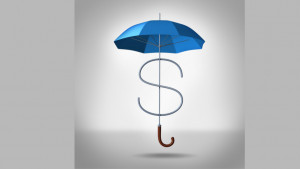- September 8, 2020
- Adam Mansfield
- Reading Time: 4 minutes

Negotiating the Price of Salesforce Shield is an Overlooked Way to Reduce Your Salesforce Spend
If you’re a Salesforce customer, you’ve likely seen first-hand how difficult it can be to keep your Salesforce costs down as years pass by. Even if you managed to achieve competitive upfront pricing and retain renewal price caps, your Salesforce spend seems like it continues to grow faster than you budgeted for, especially as more parts of the business decide to adopt more Salesforce solutions. One way to gain more control over your ever-increasing costs is to address the often-overlooked price of Salesforce Shield.
What is Salesforce Shield?
Salesforce Shield is Salesforce’s network activity monitoring system that includes event monitoring, Audit Trail, platform encryption of data at rest, and data archive abilities. It provides IT admins and security specialists with granular-level insights into user activity and can be customized to respond to unauthorized access. It essentially adds a layer of data security to Salesforce apps.
While there are other security options available on the AppExchange, Shield is Salesforce’s own solution and the encryption is done within Salesforce. As Salesforce’s own product, it is also often included in their proposals and many consider it a must-have given the criticality of security. Though Shield comes with a higher level of trust than the other third-party security options out there, it also comes with a higher cost given how it is priced.
How Salesforce Shield is Priced
Salesforce Shield is available as an add-on and is priced at a percentage of a customer’s total Salesforce product spend. For many customers, that percentage is typically 30% of their total Salesforce spend for the associated products within the order form. So unlike Salesforce’s typical per-user, per-month fee charges, the price of Shield Suite is directly tied to the amount you are spending on other Salesforce products.
As with most SaaS vendors, the amount you spend with Salesforce typically increases over time as you increase users, expand your Salesforce footprint by adopting more solutions (e.g., a long-time Sales Cloud customer adding Service Cloud or Marketing Cloud, or even both), or simply as a result of significant (and often unexpected) renewal price increases.
The Cost of Shield Can Be Significant
As product spend increases, a customer’s Shield fees increase along with it. This can quickly add up, resulting in too many Salesforce customers spending far more than they budgeted for on Salesforce solutions.
For example, let’s say you’re spending $1M/year on Sales Cloud and/or Service Cloud (a SaaS vendor’s coveted $1M ACV customer). If you did not negotiate a reduction in the price of Shield (i.e., something lower than 30% of the total associated Salesforce product spend) you will pay $300,000/year on Shield alone. At your next renewal, if your total spend with Salesforce increases 20% you would then be paying $1.2M/year plus an additional $360,000/year for Salesforce Shield. This doesn’t even consider the possibility that Salesforce could even change the percentage for Shield (e.g., 35%) at renewal.
The cost of Salesforce Shield has a compounding effect. If you’re spending too much for certain Salesforce products because you didn’t negotiate appropriate price reductions and protections, you’re hit with double the consequences – on your product costs and the cost of Shield.
Of course, security is increasingly top-of-mind for businesses, especially those in regulated industries such as healthcare and finance. There is no denying that you need high-quality and trustworthy security. Fortunately, there are steps you can take to reduce what you spend on Salesforce Shield.
How to Reduce the Lifetime Cost of Salesforce Shield
1. Negotiate the Right Price for the Products to Which Shield is Being Added
The first way you can reduce the fees tied to Shield is to ensure you are paying the right price for your Salesforce products. This includes negotiating properly discounted pricing and meaningful price protections along with achieving commercial terms that provide transparency and the flexibility for you to make changes to your subscription based on your evolving needs without a negative impact to the pricing in place.
Ideally, you already have proper discounting and pricing as well as appropriate commercial terms in place, but if you don’t (and you wouldn’t be alone), you should make efforts to improve this and rightsize your contractual relationship at renewal. You may want to take a look at our guide to Salesforce renewal negotiations, which provides actionable steps for negotiating more favorable terms in your renewal discussions.
2. Negotiate the Percentage Cost of Shield from the Start
As mentioned previously, standard pricing for Shield is typically 30% of the spend tied to the associated Salesforce products. The recommendation would be to not accept standard or list, as there is an opportunity to negotiate that percentage down. Most customers just do not think to address it.
While you are focused on improving the discounting tied to the products being renewed and/or added, I recommend pushing for a lower percentage tied to the Shield fee calculation. Salesforce needs to discount Shield just like they would (and are expected to) discount the Salesforce products themselves.
3. Protect the Shield Percentage at Renewal
When you seek Salesforce renewal price protections, it is important that you also get the proper protections. But given the fact that most achieved protections typically only apply to the pricing of the Salesforce products in your order form and do not specifically address Shield, it is important that you negotiate a commitment from Salesforce that the percentage achieved (i.e., 30% or hopefully lower) is also protected at your renewal. If you don’t, you may find yourself having to negotiate it down all over again when the term ends, or worse, it could go back up to 30% or perhaps even higher should Salesforce choose to do so.
As you can see, it is very important to ensure you are addressing many different but intertwined aspects of your Salesforce commitments so that you are properly addressing the cost of Salesforce Shield. Contact us today to see how we can lower your overall Salesforce costs, resulting in ever-important savings both upfront and over the long run.
Related Blogs
How to Prepare for a Successful SELA Negotiation
Salesforce Einstein Copilot: What Customers Need to Know about the Generative AI Tool
3 SELA Pain Points for Salesforce Customers
About the Author

